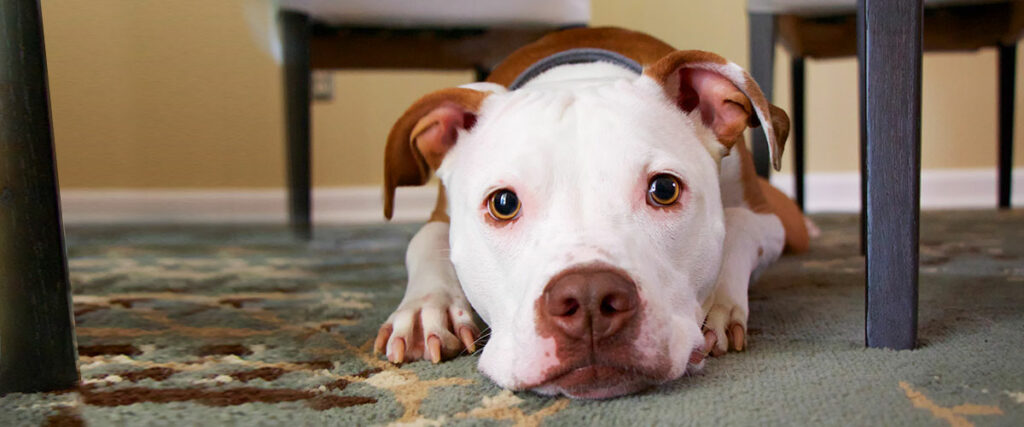Something Stinks, What Do I Do?
The Complete Guide to Odor Removal
Whether you’re moving into a new home or apartment — or recognizing a certain stench in your own castle — few things are more frustrating than not being able to get rid of a bad odor.
Especially if you can’t find it.
Sometimes something simple is to blame, like a potato rotting in a dark corner of your pantry or a backed up garbage disposal. But sometimes, the smell is embedded in your house because of longtime exposure to things like cigarette smoke, stinky pets or mold.
Cigarette smoke
Let’s start with the worst offender: old cigarette smoke. It’s one of the toughest odors to eliminate from a home, especially if the home was smoked in for a long time. The smell clings to clothes, walls, paintings, and permeates upholstery on furniture.
White vinegar is effective at destroying odor-causing molecules in the air. Just set out a few dishes, and as the vinegar evaporates, the smell will, too.
But that’s primarily effective for a room that’s just been smoked in. Setting out vinegar isn’t going to suck up the smell from every contaminated surface. You can, however, use it as part of a mixture to wipe down the walls. Combine a gallon of warm water, a 1/2 cup ammonia, 1/4 cup white vinegar and a 1/4 cup sodium carbonate (washing soda, not baking soda). Use gloves and eye protection, then wipe down the walls.
Baking soda and activated charcoal are other effective odor eliminators. You can also sprinkle baking soda on furniture overnight. Vacuum it up the next day and you should smell a noticeable difference.
Don’t put activated charcoal on furniture, though.
Once you’ve scrubbed the walls, adding a fresh coat of paint will make a big difference, too.
Courtesy Unsplash, Markus Spiske. The smell of cigarettes clings to clothes, walls, paintings, and permeates upholstery on furniture.

Activated charcoal is charcoal that has been treated with oxygen, and is more porous than traditional charcoal. According to Good Housekeeping, it’s the byproduct of slowly burnt wood, peat, or coconut shells. It binds to or absorbs toxins and odors from gases or liquids up to 1,000 times its weight!
Activated charcoal is available as loose granules, pure discs, or embedded in filters. For the granules, simply place them in a small bag made of cheesecloth, old nylon hose or any other kind of breathable cloth. This works well in stale closets.

Baking soda neutralizes odors, rather than masking them. Baking Soda deodorizes by bringing both acidic and basic odor molecules into a neutral, more odor-free state.
It can be set inside a fridge to absorb smells or around the house.
Cleaning tips
Unfortunately, every single item in your home has to be cleaned and deodorized to completely eliminate the scent of cigarettes gone by. Dust, wash, launder everything you can, and steam clean the carpets. It can be done. Even drapes will need to be cleaned.
Before you clean your drapes, be sure to check the labels. See if the manufacturer recommends hand washing, steaming, vacuuming or dry cleaning. Some drapes can be washed in the washing machine on a gentle cycle, but not all can. If you do wash them in the washing machine, do a spot treatment beforehand to make sure the detergent doesn’t discolor them.

- Measure your curtains before washing in case you need to stretch them back into shape. Remove hooks and any weights.
- Dust them prior to washing by running them through a dryer set to the no-heat cycle. You can also lay them out flat and vacuum them with an attachment.
- If you need to iron the curtains, do it along the vertical length on the side that doesn’t show.
- Make sure to clean the valances attached to the wall before you rehang the curtains.
All other fabric will need to be laundered as well, including bedding, couch cushions and carpets. For fabric that can’t be removed, sprinkle baking soda or borax on things like bedding, a futon or mattress. Leave it overnight and vacuum it off in the morning. You can also wipe it with a sponge dampened with vinegar.
Burning candles, diffusers or using room spray will not work. That just masks the smell. Once you have deep cleaned everything, use an air purifier for a few days in all the rooms affected by the scent.
Pet odor
Pets can be stinky, whether they’re big, fluffy dogs or tiny hamsters. They just smell. No one wants their home to smell like an animal, but pet owners are notoriously noseblind to their pets’ odors.
Like cigarette odor, pet odor permeates furniture, carpets, drapes, the whole shebang. This can be particularly frustrating if you’re trying to sell your house. You don’t mind the smell, but prospective homeowners probably do.
Natural oils and sweat contribute to odor caused by dogs, and litter boxes contribute to those caused by cats. Any kind of caged animal just plain stinks, but that’s a smell that’s easier to eliminate. Just clean the cages out.
Then there’s the urine smell from old “accidents.” That’s not a good situation, especially if you have carpet.
Courtesy Unsplash, Mike Burke. Pets can be stinky, whether they’re big, fluffy dogs or tiny hamsters.

- Scoop up the poop if there is any and soak up the urine. This can be done with paper towels or even coffee filters.
- If the accident happened on carpet, rinse the area with water to dilute it, then blot again with a clean rag or towel.
- Apply lots of pressure as you blot and absorb as much of the urine as possible.
- Apply a neutralizer with non-toxic enzymes made specifically for pets.
- Avoid using cleaners with ammonia.
- If the odor lingers once everything has been cleaned up, sprinkle baking soda on the area and leave it for several hours, then vacuum it up.
Vacuuming up dog fur is the easiest part of the cleaning process — finding the stink traps is the hardest. The best way to find old soiled areas in your home is by using a black light. Conduct the search at night so you can see the black light more clearly, then mark each soiled spot with masking tape. You may need a heavy duty enzyme cleaner to get carpet cleaned properly.
While steam cleaning carpets seems like a logical step, sometimes that can contribute to “wet dog” smell. There’s nothing worse than spending hours steam cleaning a carpet, or paying someone else to do it, only to have it smell even worse than before. Petfinder.com recommends using a wet vac, not a steam cleaner, since the heat from a steam cleaner can cause smells to set.
Sometimes that problem can be cleared up by sprinkling baking soda on the carpet and then vacuuming it up once it dries. But other times, it means that the problem is below the carpet, and you may have to replace the carpet and pad to get rid of the smell.
Clean upholstery just like you would for smoke smells, and then give your dog a bath. Wash his crate, bedding and whatever else he may commonly use. As for cats, consider using a self-cleaning litter box to prevent the urine smell from permeating your home.
Skunks
Skunks don’t care about you. They will spray your pets if they feel threatened, and if they spray anywhere near your house, that scent will permeate your home. It doesn’t last forever, but it can feel like it. A skunk can spray a target between 10-20 feet away with accuracy, and the scent can be smelled up to a mile away.
If you or your pet have been sprayed by a skunk, take care of that first. Hint: tomato juice isn’t the solution. Use a mixture of 4 cups hydrogen peroxide, ¼ cup baking soda and 1 tablespoon dish soap on your pets. You can use this solution on surfaces, walls or even upholstery if the skunk somehow got into your house, or if your pet got on furniture before you had a chance to clean him or her.
But if the smell lingers — and it can for weeks — open the windows and change your air filters. Many new homes are built so airtight that odors have trouble escaping.
Critter Ridder of Texas says that skunks can sneak in and hang out in your attic and crawl space, or even under your porch. If you find yourself victim to skunks frequently, check these areas and see if they’ve set up shop. If they were living in, above or under your home, you may have to replace the insulation.
Courtesy Unsplash, Bryan Padron. Skunks can really wreck your day, or week.
Musty basement
The scent wafting from a musty basement can infiltrate your entire home. Generally, it’s caused by mold and mildew, which is caused by moisture. That may be coming from leaky pipes, moisture build-up in exterior walls or stagnant water in a basement floor drain.
Olshan Foundation Solutions recommends checking for leaks around your water heater and dryer, and to check your HVAC unit for proper drainage. Check your gutters and make sure they’re draining properly as well.
Finding the moisture source is important, because mold will continue to grow if it isn’t remediated. A damp basement will always smell musty and unless you eliminate the source, mold will continue to grow. Use a dehumidifier to bring down the moisture levels in the air and if possible, open any windows or doors to increase air flow.
Another source of odor in a basement could be your sewer. Fixing this source of smell can be as easy as replacing a wax ring seal, but it could also be a cracked sewer line. If that’s the case, you’ll need to hire a plumber to repair the issue.
Iron ochre is another common odor-source in basements. It’s a rust-colored, gelatinous ooze that has a foul smell that has been described as musty, oily, swampy or like sewage. Iron ochre is caused by a bacteria in the soil that oxidizes iron when it comes in contact with it. According to Island Basement Systems, the combination of the iron compounds formed and the bacterial slime is iron ochre. The slimy material can be removed and the objects it’s on can be washed off with soap and water.
Courtesy Unsplash, Isaac Jarnagin. Basements can smell musty, and that’s usually because of a moisture problem.

- Leave out a bag of traditional charcoal or packets of activated charcoal
- Lay out dishes of vinegar for two to three days
- You may have to wash the walls with a vinegar and water mixture — one part vinegar to three parts water — or even paint them if the odor keeps sticking around
- You can also sprinkle chlorinated lime on the floor until the odor is gone, then sweep it up.
Other irritating smells
Basic cleaning can eliminate the most common odors. For temporary bad smells, set out dishes of baking soda or white vinegar. Sprinkling some baking soda into the bottom of a trash can and the bag itself can help reduce odors coming from trash, and cutting a lemon in half and leaving it out can freshen up any room.
Refrigerators
Do you have to hold your breath when you open your fridge? Fridges often stink because of rotten food or spills. Once it has been cleaned out, wiped down, and refilled, set a box of baking soda in the fridge to absorb the rest of the smell. One box is good for three months.
Cars
Did you leave the windows down while it rained and now your car smells like death? Baking soda can take care of that too. Sprinkle it on the seats and whatever else got exposed to the elements and leave it overnight. The next day, vacuum it up and leave a box of baking soda in the car for a few days.
Old spills can sometimes smell bad long after the spill took place. If you have children, for example, the backseat can quickly become a cesspool of bacteria and odor. Cleaning spills immediately after they happen is the best way to prevent odor, but you may not know that someone spilled soda or, heaven forbid, milk.
A bag of activated charcoal works just as well as baking soda for eliminating lingering smells. You can also spray a solution of vinegar and water on the specific odor source and scrub it. A carpet cleaner made specifically for automobiles will work, too.
Garbage disposals
This one is usually easy. Pour a cup of ice into the disposal, followed by half a cup of rock salt or kosher salt. Then run the disposal.
Lemon or orange peels are also an easy way to freshen up the garbage disposal.
Trash cans
This is usually caused by gunked up food or liquid that has seeped through a trash bag. Once you’ve taken out the trash, take the garbage can outside and clean it out. Use kitchen gloves and a face mask if you need to. It’s not a fun job, but it has to be done sometimes.
Dishwasher
This is a surprising one. Did you know that gunk can build up in the drain? That can create a smell that you may never find simply because you don’t think to look there! Rinse dishes before putting them in the dishwasher to prevent this from happening to begin with, but if the damage is done, it’s easy to fix.
A dishwasher drain should ideally be cleaned out about once a month. Remove the bottom dish rack and inspect the drain. Remove any gunk or food caught there. Then place a cup of vinegar in the top rack of the dishwasher and sprinkle baking soda along the bottom. Run it through a hot water cycle and voila: clean, fresh dishwasher.
No matter what the smell is, once you’ve cleaned as well as possible and aired out your home, remember to change your HVAC air filter. Open your windows and let the house air out as much as possible.








